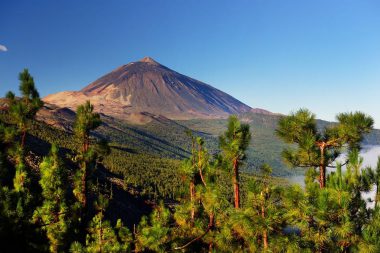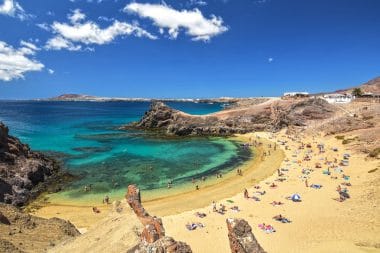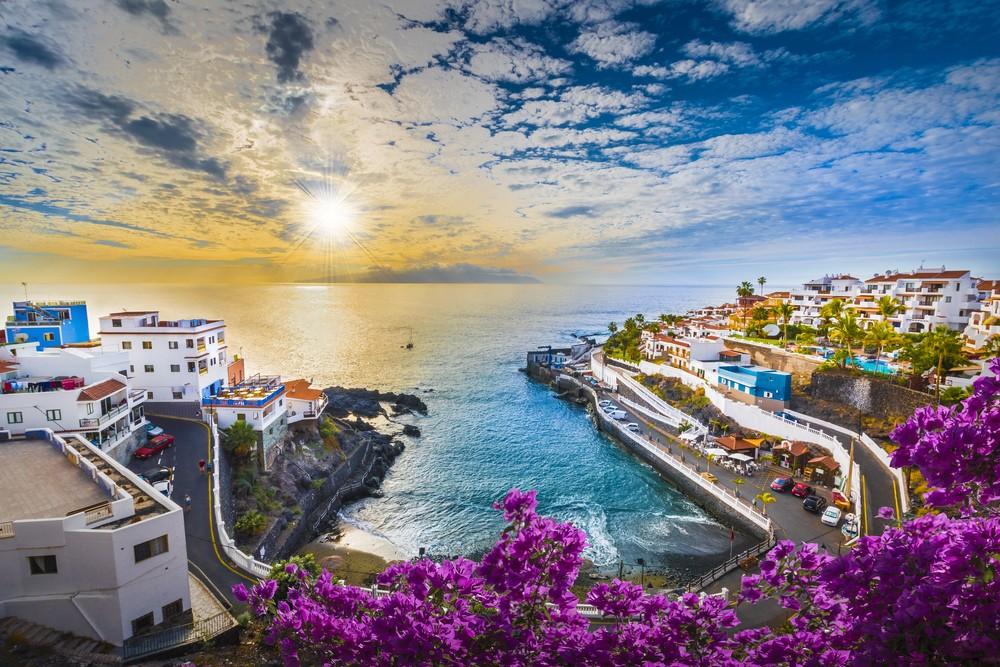[mapsvg id=”3388″]
Together with Cape Verde, the Azores, the Madeira Archipelago and the uninhabited islands of Selvagens, the eight Canary Islands are part of the geographical region of Macaronesia. The special thing about the popular Spanish holiday islands, which line up west off the coast of Morocco , is their volcanic origin, with each island having an individual history of formation.
What they all have in common, however, are the dreamlike, varied beaches and bays, a species-rich flora and fauna and they offer numerous opportunities for leisure activities. Thanks to the subtropical climate and the proximity to the equator, the Canary Islands are an ideal holiday destination for active holidaymakers, nature lovers, pleasure holidaymakers and families with children all year round.
The three big sisters of the Canary Islands: Tenerife, Fuerteventura and Gran Canaria

Tenerife, Fuerteventura and Gran Canaria are the three largest Canary Islands with a size of between 1500 and 2000 square kilometres. They form the centre of the archipelago and are also the most populous islands in Spain. In the center of Tenerife , the highest mountain in Spain rises at 3718 meters: The Pico del Teide.
The impressive mountain region with its cauldron-like structure is part of the UNESCO World Heritage Site and partly designated as a national park. Especially in the spring, autumn and winter months, hikers and nature lovers are drawn to Pico del Teide, which is one of the most visited national parks in Europe. Tenerife has had an eventful history as the most important base for shipping between Spain and the American colonies. This history has left its mark on the picturesque old towns of La Laguna (UNESCO World Heritage Site) or La Oratava.
More than sandy beaches and sunshine

The two sisters Fuerteventura and Gran Canaria also have more to offer than “just” fine sandy beaches and unique sunny spots. Due to the constant winds, Fuerteventura is also an Eldorado for surfers, windsurfers and kitesurfers. Fuerteventura also includes the small, offshore fog island of Lobos, which is a popular destination by boat. Gran Canaria , on the other hand, is known for its animal parks, the botanical garden, the cactus garden, as well as open-air museums and cave villages. The island’s capital Las Palmas with its large harbour and beautiful old town is also a popular destination. In addition, bathing beauties and sun worshippers can look forward to around 60 kilometres of fine sandy beaches on Gran Canaria – the golden beach of Maspalomas, which stretches from Playa del Inglés to the large lighthouse, is particularly popular.
The specials: Lanzarote & La Palma
The elongated island of Lanzarote in the far northeast of the Canary Islands is the oldest in the archipelago with a size of around 850 square kilometers. Its landscape is still most strongly influenced by the volcanic eruptions, as the last eruption occurred in the 19th century. Lanzarote is known for its beautiful coastal areas, which alternate between fine sandy beaches, pebble beaches and rugged rocky bays and the unique wine-growing areas in the black volcanic soil.

Since Lanzarote is only about 150 kilometers off the Moroccan coast, the Arabs have left their mark here, but also the pirates. To ward off these, some imposing fortresses were built, which are now popular sights. Its sister La Palma, with a size of around 700 square kilometres, is also still volcanically active. In addition to extensive laurel and pine forests, there are many plants on La Palma that were not originally native to this area, but were introduced by humans. Among them is the popular Advent star, which can be found in every European household during the winter months. There is a national park, several nature parks and protected landscapes, natural monuments and several areas of scientific importance.
La Gomera & El Hierro – Small but nice
The islands of La Gomera and El Hierro are the youngest islands in the archipelago, dating back 2 and 1.2 million years respectively, and were the smallest inhabited islands until 2018 (La Graciosa was officially recognized as the eighth Canary Island in 2018). Due to the differences in altitude on La Gomerra, several vegetation zones have been created in one room. In the Garajonay National Park, more than 10 percent of the island is protected, the heart of which consists of the stunning, evergreen cloud forest. El Hierro, on the other hand, became famous mainly as an island of exile, because the Spaniards brought their inconvenient politicians, military and free spirits there. Today, the island, which is only about 300 square kilometers in size, is an Eldorado for nature lovers, because there are many plant and animal species here that cannot be found anywhere else.
Können wir Ihnen helfen?
Benötigen Sie Unterstützung bei Ihrer Reiseplanung oder weitergehende Informationen zu einzelnen Reisezielen? Wir freuen uns über Ihre Kontaktaufnahme.


